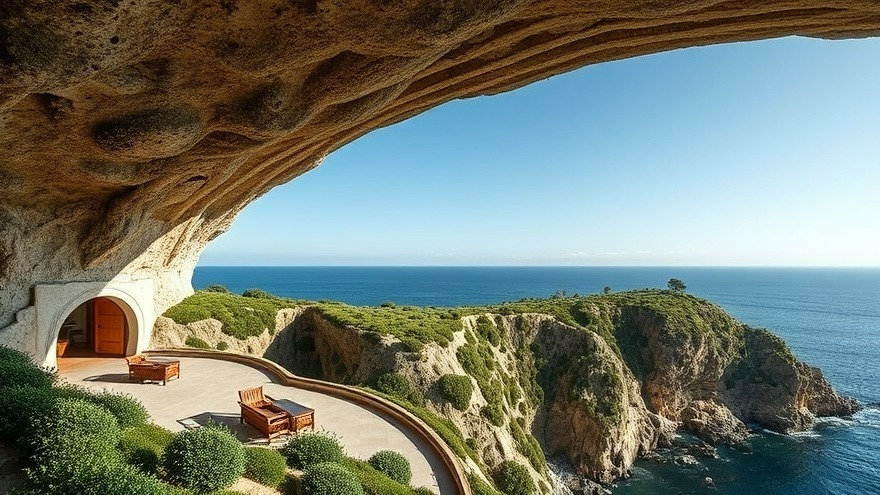
The Rise of Biophilic Design in Remote Workplaces
As digital nomads increasingly seek spaces that inspire creativity and productivity, biophilic design is rapidly gaining traction. This approach integrates natural elements into architecture and interior design, creating environments that can improve mental well-being and cognitive functioning. The cave-like coastal viewpoint designed by 3andwich Design showcases how a workspace can blend seamlessly with nature, inspiring others to adopt a similar ethos in their own remote setups.
Creating Spaces that Enhance Productivity
The ergonomic design principles represented in 3andwich Design's workspace highlight the importance of a well-thought-out environment. By optimizing your remote workspace for comfort and efficiency, you can potentially improve your focus and productivity levels. Consider employing a green roof, like the one seen in the cave viewpoint, to foster a connection with nature while benefiting from thermal insulation. This not only enhances your comfort but also promotes a sense of tranquility—essential for productive workdays.
Integration of Work and Nature: A Optimal Strategy
By incorporating elements such as greenery, natural light, and organic materials, you can naturally elevate your work environment. Research shows that exposure to nature can alleviate stress, increase creativity, and boost mood. Whether you’re designing your home office or finding a temporary workspace as a nomad, think about how your surroundings can impact your mental well-being. A green, organic-focused environment doesn’t just look good; it feels good too.
Practical Tips for Designing Your Remote Workspace
Start by decluttering your area to reduce distractions. Implement ergonomic furniture that suits your posture, ensuring that your setup promotes health and well-being while you're working. Use plants to enhance aesthetic appeal and improve air quality. Similar to 3andwich’s cave design concept, think about maximizing natural light to support a positive atmosphere. Design your workspace with flexibility in mind—this can help encourage movement throughout your day; for example, try a standing desk or a cozy reading nook within a plant-laden corner.
Future Predictions: The Workspace of Tomorrow
The future of workspaces is leaning heavily towards wellness-centric designs. As society shifts back towards normalcy post-pandemic, workers are more likely to prioritize mental health and well-being in their work environments. Structures that reflect this shift—like those designed with green roofs and natural elements—will likely become more popular and sought after by remote workers.
Quotes and Anecdotes: The Heart of Design
As 3andwich Design puts it, "We aim for our structures to harmonize with their surroundings, promoting a peaceful atmosphere that naturally supports creativity and productivity.” This ethos can resonate with remote workers seeking inspiration and energy in their surroundings. Designing a workspace that reflects personal values and promotes well-being will not only enrich their work lives but also cultivate a positive mindset.
Decisions You Can Make with This Information
By embracing biophilic design principles, you’ll inspire better decision-making regarding your workspace. Actively curate your environment so it supports your productivity and mental wellness. Invest in ergonomic furniture and embrace natural elements, ensuring that every aspect of your workspace contributes positively to your work and overall health.
In conclusion, the developments we see in spaces like the cave viewpoint by 3andwich Design are not just architectural innovations; they signal a movement towards more mindful, human-centric work environments. For digital nomads, this is an opportune moment to reassess their workspaces and prioritize health and wellness in their design choices. By taking small, actionable steps, you can create an inspiring and comfortable workspace that unites productivity with your well-being.
 Add Row
Add Row  Add
Add 




Write A Comment